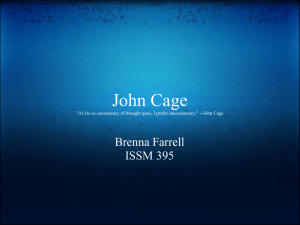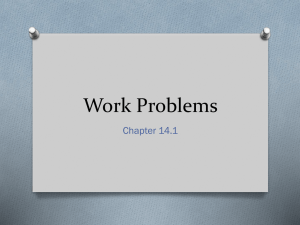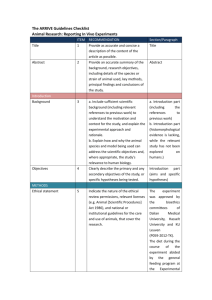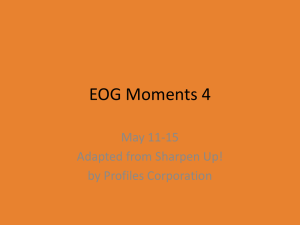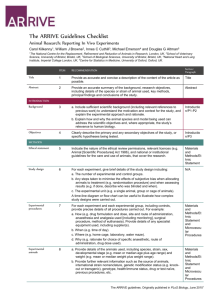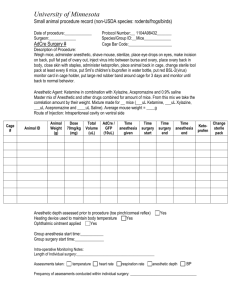Abstract - Magnus Andersson
advertisement
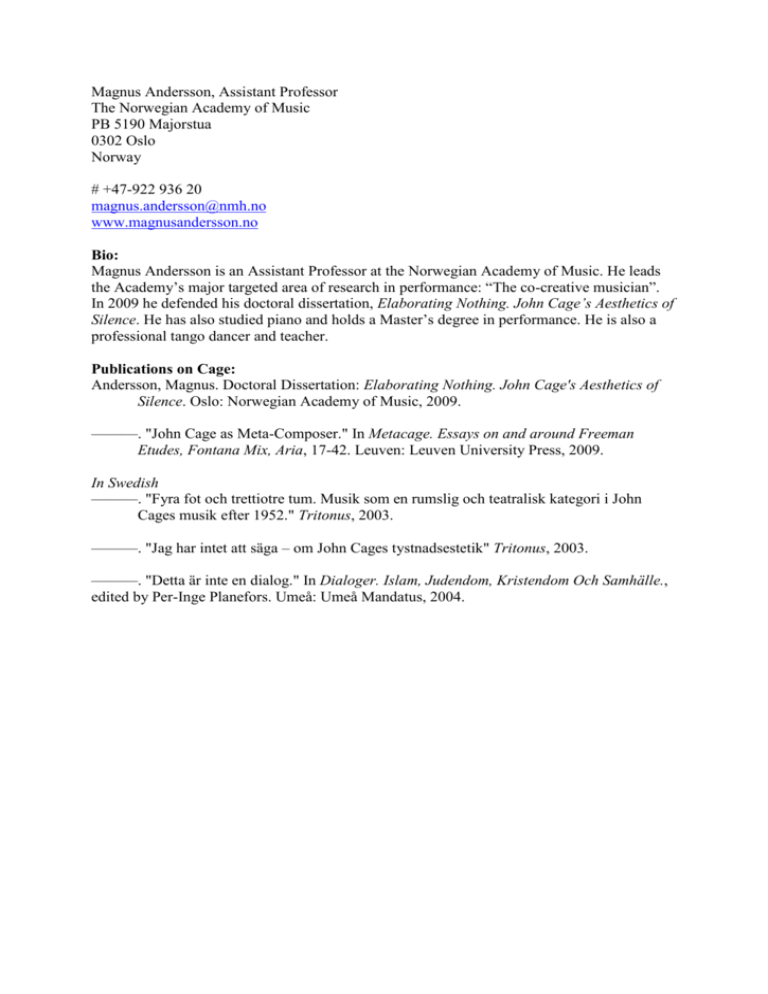
Magnus Andersson, Assistant Professor The Norwegian Academy of Music PB 5190 Majorstua 0302 Oslo Norway # +47-922 936 20 magnus.andersson@nmh.no www.magnusandersson.no Bio: Magnus Andersson is an Assistant Professor at the Norwegian Academy of Music. He leads the Academy’s major targeted area of research in performance: “The co-creative musician”. In 2009 he defended his doctoral dissertation, Elaborating Nothing. John Cage’s Aesthetics of Silence. He has also studied piano and holds a Master’s degree in performance. He is also a professional tango dancer and teacher. Publications on Cage: Andersson, Magnus. Doctoral Dissertation: Elaborating Nothing. John Cage's Aesthetics of Silence. Oslo: Norwegian Academy of Music, 2009. ———. "John Cage as Meta-Composer." In Metacage. Essays on and around Freeman Etudes, Fontana Mix, Aria, 17-42. Leuven: Leuven University Press, 2009. In Swedish ———. "Fyra fot och trettiotre tum. Musik som en rumslig och teatralisk kategori i John Cages musik efter 1952." Tritonus, 2003. ———. "Jag har intet att säga – om John Cages tystnadsestetik" Tritonus, 2003. ———. "Detta är inte en dialog." In Dialoger. Islam, Judendom, Kristendom Och Samhälle., edited by Per-Inge Planefors. Umeå: Umeå Mandatus, 2004. Zen according to John – a parallel reading of Cage and Daisetz Teitaro Suzuki The role of Zen in John Cage’s practice has been thoroughly acknowledged but not properly understood. Due to a narrow view of what art music is (c.f. the CFP), researchers have tended to interpret Zen in a Western discursive practice that is remote from Cage’s practice. This paper claims that most of the pivotal aesthetic ideas that Cage had around the time 4’33’’ was written are direct and indirect quotes from the works of Daisetz Teitaro Suzuki. Cage wrote music and words in the language of a Zen world, so his practice should subsequently be understood in that vein too. Zen was not inspirational to Cage’s practice (Zen precedes the compositional practice), but Cage’s practice was Zen (neither entity was causing the other). To understand these thoughts the researcher must depart from scholarly, stringent, and dualist language and attempt to view reality through Cage and Suzuki’s non-dualist perspective (c.f. the CFP’s focus on taking different perspectives and identities). Understanding Cage from a perspective of causality will lead to misunderstandings. Through the proposed method of reading Cage, we will attain a better understanding of how the semantics of what Cage said were often irrelevant. He demonstrated his aesthetic ideas through the structure of what he said (c.f. Part 4 of “Lecture on Nothing”). Transferring our perspective from causality to the Zen moment we arrive at a new understanding of Cage, and gain new tools to use Cage’s music in a meditation-like practice. Keywords: John Cage, Zen, non-dualism, methodology
